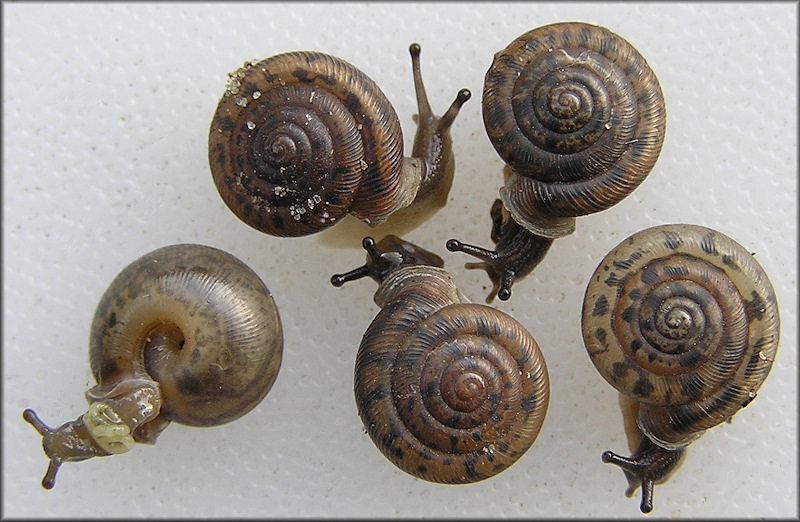Classification
Domain - Eukarya
Daedalochila subclausa is
classified under Eukarya because it is an organism with cells
containing a nucleus and other membrane bound organelles (Hickman, 2007). Eukarya means "good nut"
in Latin which refers to the nucleus that resides in its cells.
Kingdom - Animalia
Daedalochila subclausa is classified under Animalia
because it is a multicellular, eukaryotic organism (Hickman,
2007).
Phylum - Mollusca
Daedalochila subclausa is
classified under Mollusca because it is triploblastic, has bilateral symmetry,
a coelomate, and is a
soft-bodied animal with a mantle, visceral mass, and a muscular foot
(Hickman, 2007).
Class - Gastropoda
Daedalochila subclausa is
classified under Gastropoda because it has torsion and spiral winding shells. Gastropoda
means "stomach foot" in Latin since land snails and slugs move on
their stomach which is called the foot (Hickman,
2007).
Order - Sylommatophora
Daedalochila subclausa is classified under
Stylmmatophora because it's an air-breathing terrestrial snail that has two
tentacles with eyes at the tips (Hickman, 2007)
Family - Polygyridae
Daedalochila subclausa is classified under
Polygyridae because it's distinguished by lack of a dart apparatus,
it contains
ribbed jaws, and retractor muscles of eyes and pharynx are united
into a single band (Zipcodezoo.com, 2012).
Genus - Daedalochila
Daedalochila subclausa is classified under
Daedalochila because it is a small snail ranging from 10 mm to 15mm in diameter.
It has convoluted apertures with very narrow openings. It's Range is limited to
the
southern United States and northern Mexico (Pilsbry, 1940).
Species - Daedalochila subclausa (Pilsbry, 1899)
Common Name: Suwannee Liptooth
Daeda means "intricate" in Latin, while Chila means "lip." Subclausa can be broken down into sub, which means "under," and clausa, which means "closed." The common name "Suwannee Liptooth," refers to the Suwannee River which runs through southern Georgia and northern Florida where this species can be found. "Liptooth" refers to the many "teeth" or folds within tiny slits on the radula.
Continue to our Habitat page to find out where this snail lives!
